I hailed my first solo taxi today! The taxi driver overcharged me--10,000 som for an 8 minute ride, absolutely outrageous--but since I was in a hurry, and don't speak Uzbek, and 10,000 is only about a dollar in USD, I let it slide.
The taxi drops me off near the Avtovokzal: one of the most efficient and intimidating ways to travel in Uzbekistan. Every major city has one: they are huge parking lots filled with cars, and their drivers stand outside of them and shout the names of cities. You find a driver shouting your destination, and negotiate the price for a seat in the car. You can wait until all of the seats in the car are full or do what my companion and I did: buy all the seats in a small car in order to leave faster and have a little extra leg room on your way to Biruniy.
Biruniy is a small farm town in the autonomous region of Karakalpakstan. It’s not terribly far from Urgench, but there’s a stark contrast in how rural it is. My neighbors in Urgench have sheep and chickens, sure, but a popular method of transportation in Biruniy is traveling via donkey cart.
My companion has two destinations in mind: a mystery religious site, which is marked on our map but has no other label or description, and a small qala.
We walk for an hour or so to get to the first site, which turns out to be a bust. It's not that it isn't a religious site, but that it's a bit too religious for us. The women who are there are wearing scarves (I forgot mine, an unforgivable faux pas even for a foreigner), and it's dead quiet. We walk up a hill a bit towards a mausoleum, but opt not to go in for concern of disturbing people who are actually praying with our touristy-ness.
The qala is next, another 45 minute walk away through through the outskirts of Biruniy. We see a lot of very excellent donkeys.
^ And excellent cows. Just like home.
I would feel a bit uncomfortable wandering through the Uzbek countryside alone, so I'm lucky to have someone with me. I'm doubly lucky that he’s a previous ETA who spent last year studying the Karakalpak language. There are only about 500,000 native Karakalpak speakers, which means that everyone he talks to in Biruniy is immediately charmed by the strange American who taken the time to learn their language and is more than happy to give us impromptu history lessons, food, directions, etc. He’s equally excited to talk to them: due to recent political unrest in the region, no Fulbright scholars can be stationed any closer to Karakalpakstan than we are.
With the help of some friendly strangers, we eventually find our way to the qala. "Qala" means fortress. Thousands of years ago, the natural rerouting of the Amu Darya river transformed the Khorezm area into an oasis. Surrounded by the desert, the fertile land was a hot commodity: hence the fortresses, which were used to control territory. As nature took its course and the Amu Darya shifted again, Khorezm returned from a lush marshland to a sparsely populated desert. When the irrigation failed and Khorezmian people abandoned the area, the fortresses remained.
There are 50 recognized fortresses in Uzbekistan (hence the Uzbek title Elliq Qala, or the fifty fortresses), but it's theorized that further into the desert there are hundreds more that haven't yet been discovered.
I think the qala is amazing. My companion says it's actually one of the smallest ones he has seen, which makes me even more excited for our future adventures. When we walk in, the fortress is empty except for an older man on a bike. He speaks Russian, and we chat for a while about the history of the qala. As he heads towards the exit, another man walks in and bike guy introduces him as the curator.
^ Bike Guy
The curator asks where we're from, and says that he rarely sees Americans out this far. Usually they're on a tight schedule, so if they want to see impressive ruins they'll just stop at Khiva. He invites us to scale the qala, which feels pretty wrong but who are we to turn down a direct invitation to do something super neat?
The curator climbs up the sparse footholds ridiculously quickly for an older fellow in khakis and polished leather shoes, and my companion and I eventually manage to scrape ourselves up the side through a couple of very un-athletic maneuvers and literal handholding from the curator. The view from the top is worth it. The curator asks if we're worried about heights, and then tells us we're free to walk along the top of the qala if we want to.
I laugh at the height thing, but once I start walking along the qala I realize that I am, indeed, a bit worried about heights--at parts, the path narrows to a foot or so with a steep drop along the sides. The ~2000 year old walls that we're walking on are made of a dried mud-clay that has already crumbled away at the edges. It sounds hollow as we walk on it, which makes sense because some of it probably is.
After our graceful descent from the wall (I get fully stuck at one point and my companion has to climb back UP again so that when I drop off of my ledge he can stop me before my momentum takes me over the side), the curator tells us that he has a car and, if we want, he'll give us a personal tour of some of the other nearby fortresses. His car is back in town, but we skip the previous long walk when he flags down the first car he sees and gets us a free ride.
A minute into our drive, he leaves my companion and I in the backseat to go chat with a group of guys hanging out by a corner store for a while. He pops into the store and emerges with a bottle of coke for each of us—an American drink for the Americans, he says—and then we're on our way.
The drive is long, but we’re in excellent company. And my companion was right—the next qalas are significantly larger than the first.
^ Part of the outer wall of this fortress was restored, but you can still see just how tall it was.
^ From the third fortress that we visited—the structure of rooms was the most clear in this one.
Between cigarettes and long stretches of silence the curator talks us through the structure of the different fortresses, how long they’ve been there, and points out original pottery fragments. During the Soviet Union, archeological interest in the qalas increased and the more accessible of them were partially excavated. The notable findings were taken to Russian museums, but especially out at the further fortresses the “lesser” findings—pottery fragments, fossilized bone, etc—are easy to find.
As are wasps. There are so many wasps.
^ My companion and I at the second fortress—probably smiling because this was the only one where we didn’t see wasps OR scorpions.
Two qalas later, and it’s time to go home. The curator offers to drive us further, says we could get to at least two more, but I have a wedding in the evening so I need time for a nap and a snack. He gives my companion his number, and tells us he’ll drive us to more historical sites on any weekend that we’re free. He also wants to introduce us to his wife and family. We promise him we’ll take him up on it.


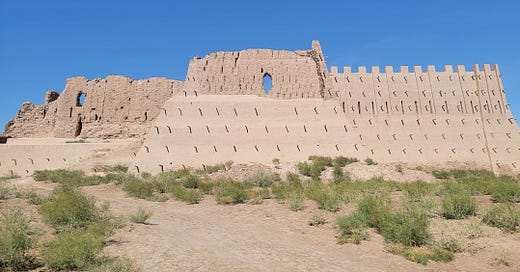


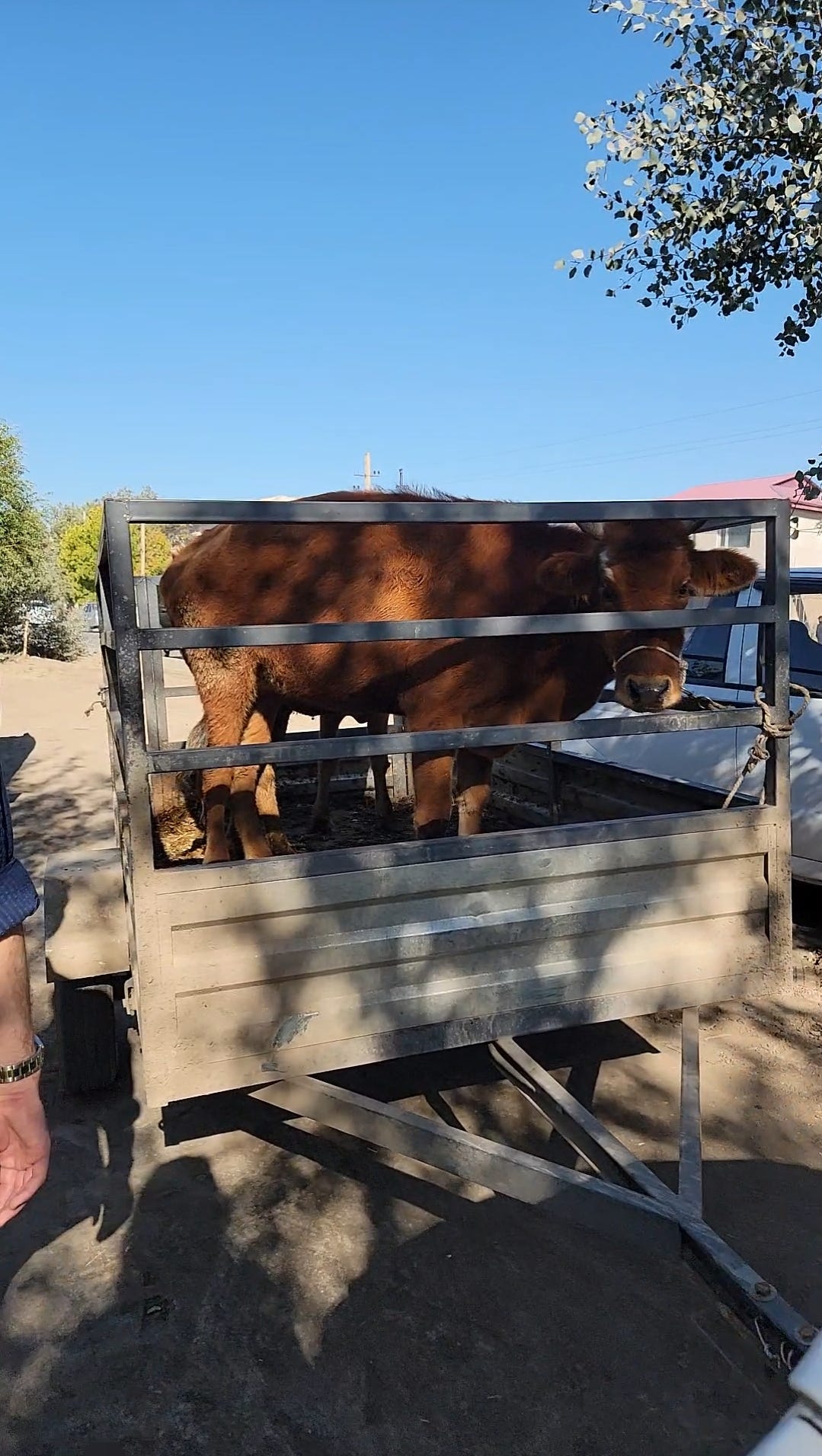
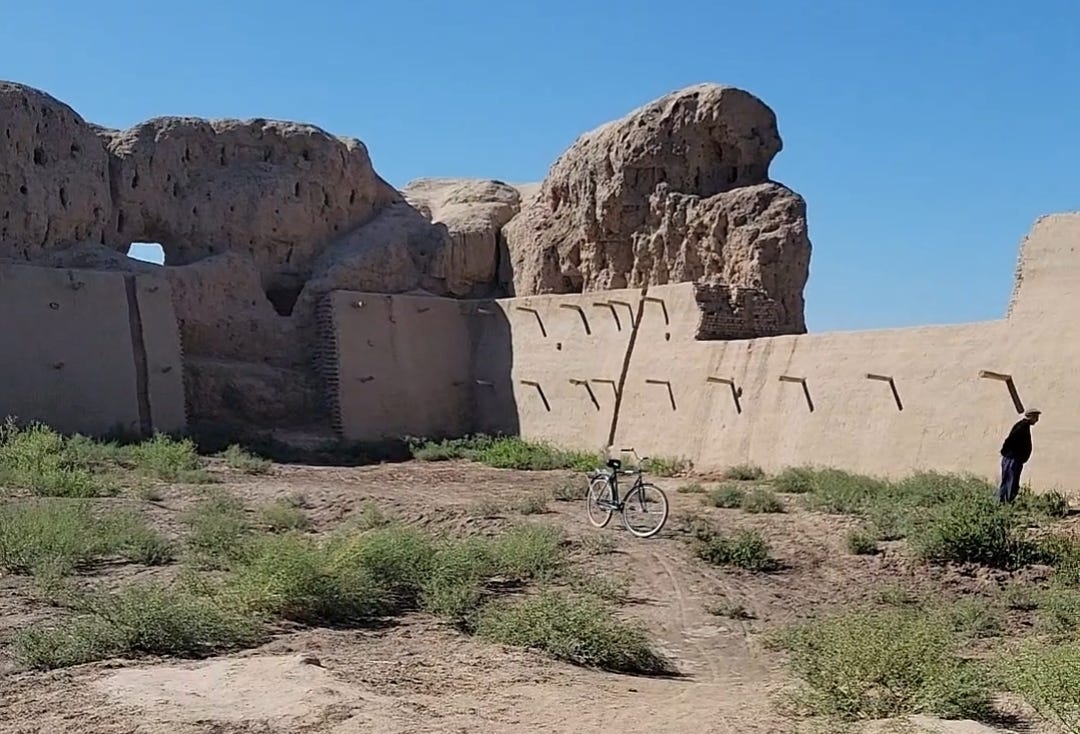

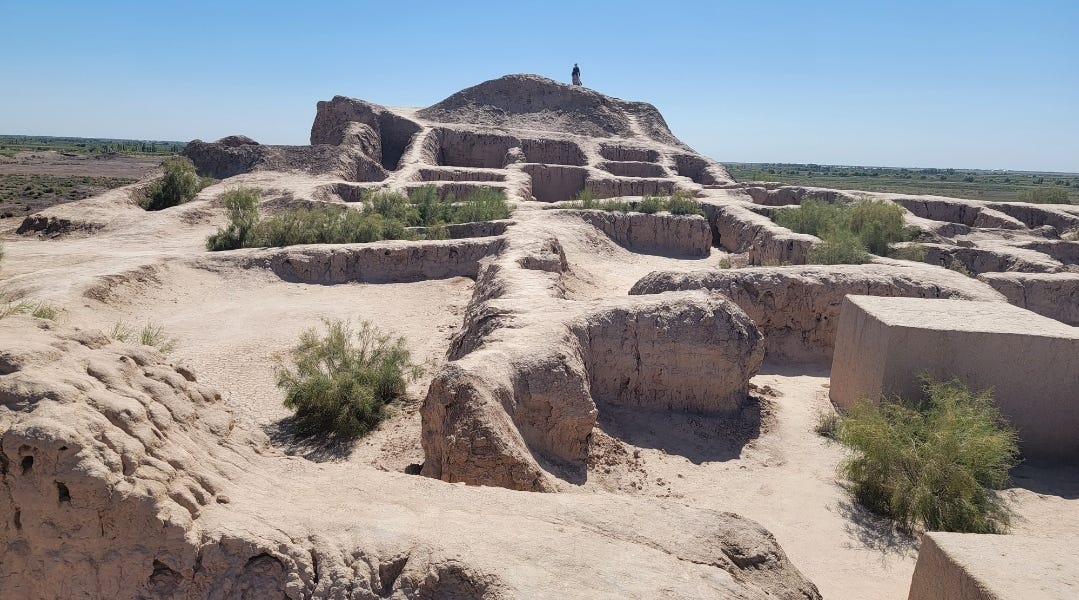
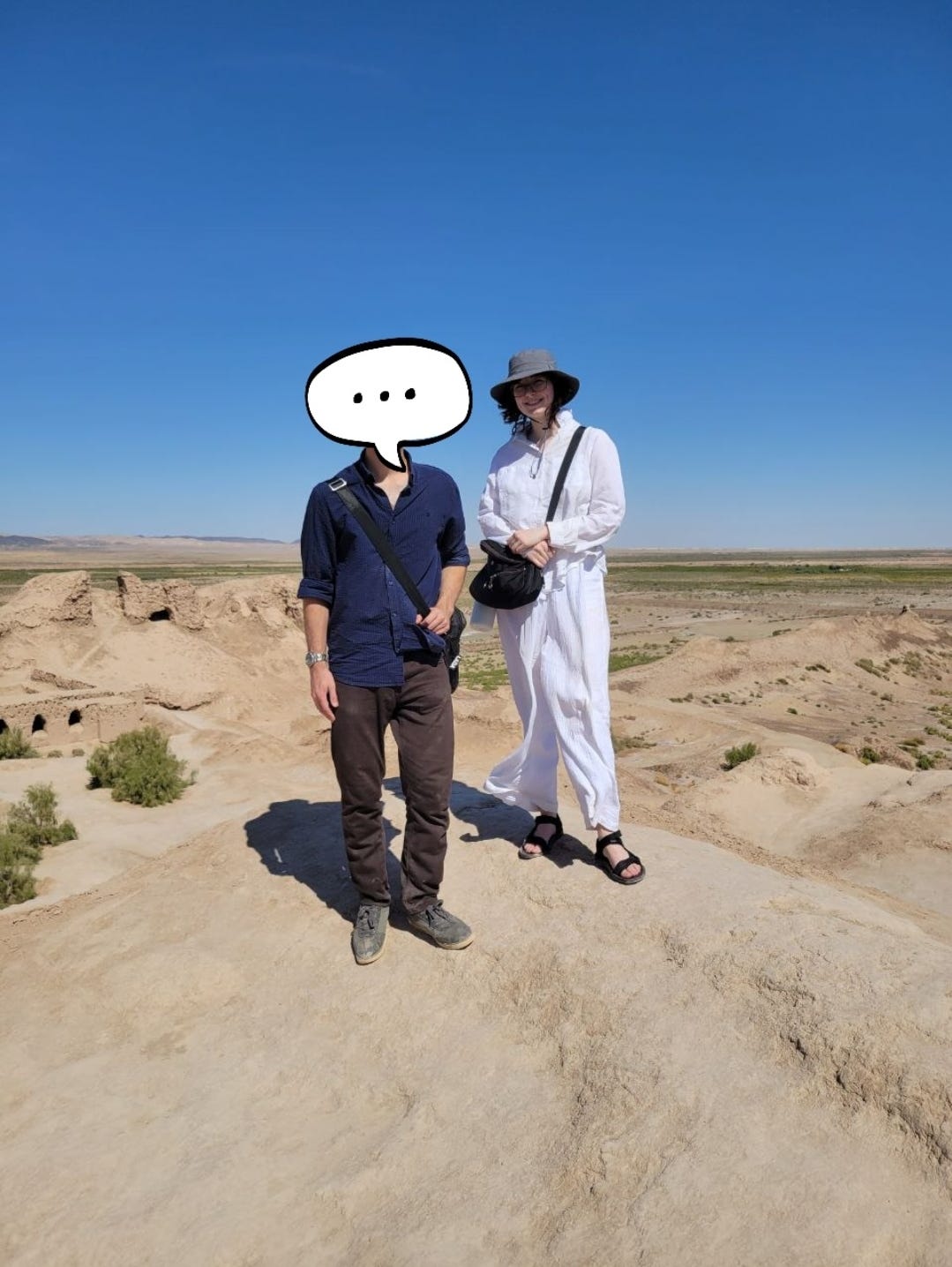
I have been horrified by some of the heights you have scaled, from massive conifers to crumbling ledges on cliffs. So to hear you were scared means you were in some serious danger.
Thoroughly enjoyed